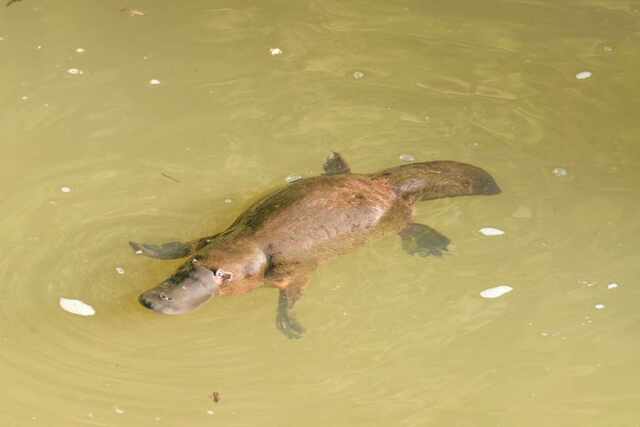In a bid to help stabilise the population of duck-billed platypuses, Unitywater has partnered with ECOllaboration to rehabilitate a heavily impacted section of Petrie Creek at Nambour.
The Sunshine Coast hosts a healthy population of platypuses, but the species is classified as near-threatened due to habitat destruction, pollution of riverbanks and waterways, and human activities such as yabbying.
Unitywater Environmental and Cultural Heritage Planning Specialist, Emma Newton, said restoration works have encouraged local fauna, including the duck-billed platypus, to return to their natural habitat.
“Unitywater is committed to enhancing the environment in our region through green spaces and cleaner waterways, and working with ECOllaboration to restore this section of Petrie Creek has enabled us to demonstrate this responsibility,” Emma said.
“The collaboration has seen almost 1km of bushland successfully restored through the management of invasive and restricted weeds, and removal of debris created by human activity in the highly populated area.”
ECOllaboration Community Engagement Officer, Trevor Morrison, said the removal of category three restricted weed structures including the madeira vine and cat’s claw creeper created a more stable bank for platypus burrows.
“One of our volunteers recently spotted two platypuses behind Unitywater’s Wastewater Treatment Plant in Nambour only a week after restoration works were completed in October, which is really encouraging,” Trevor said.
“Platypuses are highly sensitive to water quality, so spotting a couple so soon after the completion of these restoration works is a strong indicator of the positive impact made on this section of the creek.”
Unitywater and ECOllaboration will continue to monitor platypus activity within the area using ‘eDNA’ sampling, which helps measure the population dynamics and movements within the area.
To learn more about the program, volunteer to take part in a platypus survey, or report a sighting, head to ecollaboration.org.au.







